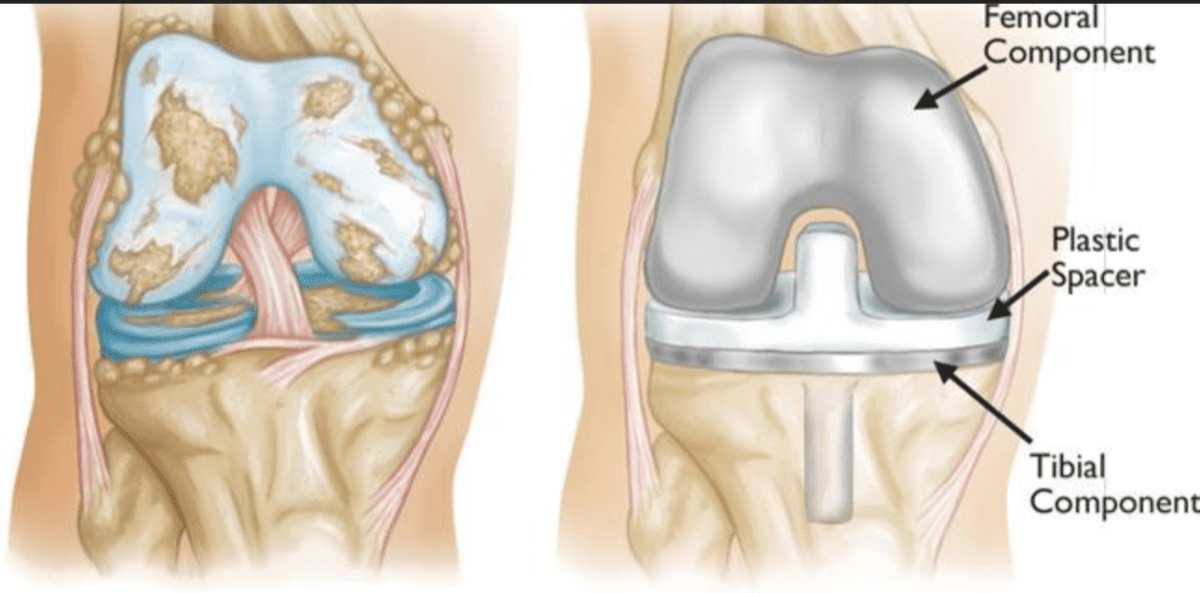A total knee replacement, otherwise known as a knee arthroplasty, is a surgical procedure involving the removal of arthritic cartilage and bone from the knee joint, and resurfacing it with metallic and plastic components. The aim is to restore mobility, flexibility, and walking while reducing pain.
This highly successful operation depends on the integrity of the soft tissue envelope around the knee, especially the collateral ligaments. Adequate component positioning is critical to ensure that the knee replacement is well-balanced, and therefore more likely to result in a satisfactory outcome for the patient.
The advent of computer navigation and robotics has meant that preoperative planning can be made more accurately, resulting in better outcomes and lower revision rates as compared to conventional techniques, as per the Australian Registry Data.
Dr Kulisiewicz is highly experienced in robotic knee replacement surgery having been the first in Canberra to perform a Robotic Total Knee Replacement in August 2018.
Dr Kulisiewicz performs both handheld and Robotic arm-assisted Robotic Knee Replacements.
Causes
Knee replacement surgery is most commonly performed for the following reasons:
- Arthritis (osteoarthritis, rheumatoid or gout)
- Knee injuries
- Haemophilia (a bleeding disorder where the blood does not clot properly)
Symptoms
- Chronic knee pain
- Difficulty walking and/or limping
- Chronic inflammation of the knee
- Stiffness of the knee
- Fractures of bones surrounding the knee or tears in the knee ligaments causing limited knee function and pain
Surgical Procedure
Total Knee Replacement surgery is performed in a hospital with the patient having undergone either a general or spinal anaesthetic. Additionally, nerve blocks are often performed to reduce post-operative pain and to regain mobility earlier.
- The patient is positioned flat on their back, they are anaesthetised, and a leg tourniquet is applied. The leg is prepped and draped with an antiseptic solution.
- After performing the skin incision, the knee joint is exposed, and arthritic spurs are excised. Tracking pins that communicate with the robotic platform, are then connected to the femur and tibia. This allows the knee replacement robot to access information about the patient’s knee including the anatomy, ligament gaps, and the long axis of the leg.
- Dr Kulisiewicz is able to analyse where the knee replacement components should be inserted to optimise the knee movement, ligament balance, and leg alignment. Once this step is complete, the robot is used to remove the arthritic bone, ignorer to make space for the artificial knee. Removing the right amount of bone is critical, as this will determine the position of the knee replacement.
- Trial knee replacement components are inserted to check the range of movement, tissue and ligament balance, and patellar tracking. The robotic platform is used to confirm these components.
- Once confirmed, the trial components are removed, and the definitive knee replacement components are inserted into the knee.
- The knee is washed out and any bleeding vessels coagulated once the tourniquet is released.
- The soft tissues are infiltrated with a local anaesthetic and anti-inflammatory solution to combat post-operative pain and swelling.
- The knee is carefully closed with sutures that are strong enough to commence immediate rehabilitation and weight-bearing the same day of surgery.


Postoperative Care & Rehabilitation
Postoperative rehabilitation is very important to the success of surgery.
- Use pain relief.
- Attend physiotherapy, postoperative rehabilitation, and do strengthening exercises.
- Attend a review with Dr Kulisiewicz at 6 weeks to check the wound, stitches, range of movement, and perform an x-ray.
- Then at 12 month’s, review with Dr Kulisiewicz again.
- It is important to always inform your dentist that you have a knee replacement, so that relevant antibiotics to prevent infection may be given when you have dental procedures. Ensure that any skin or urinary infection is promptly treated.
Potential Complications
While the Robotic Total Knee Replacement is a relatively safe procedure, the risks and complications that may occur are no different to that of any surgery. Some of the important complications include:
- Bleeding
- Infection
- Blood clots (deep venous thrombosis) which are uncommon but can be fatal
- Damage to surrounding tissue or inadvertent injury to blood vessels or nerves
- Stiffness or instability in the knee
- Difficulties with wound healing
- Anaesthetic risks which will be discussed with you when you speak with your anaesthetist
Dr Kulisiewicz and his team take all measures to avoid these risks and complications. To ensure that an optimum result is achieved, it is important that the patient play their part also, by co-operating with all medical and hospital staff. If you have any queries regarding these complications, please feel free to speak with Dr Kulisiewicz. Should you develop wound discharge, unexplained calf pain, fever or chest pain, or any other concerns following surgery, please notify Dr Kulisiewicz or the staff immediately.
Other services
Knee Arthroscopy & Cartilage Repair
There are two types of knee cartilage. The articular cartilage that lines the end of the knee bones, as well as the shock-absorbing cartilage known as the meniscus.
Read more
Anterior Cruciate Ligament (ACL) Reconstruction
The Anterior Cruciate Ligament (ACL) is one of the most important ligaments in the knee. It functions by stabilising the knee joint particularly in twisting movements and changing direction during sports and general movement.
Read more

